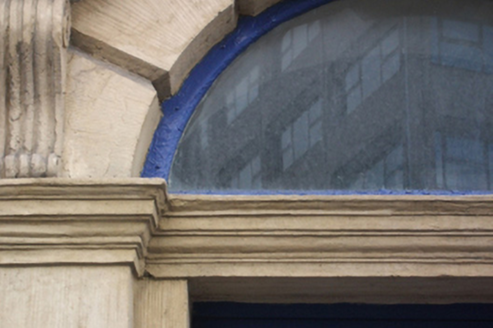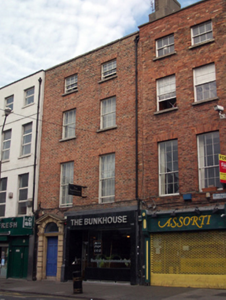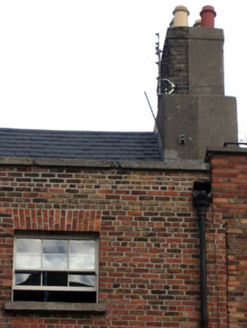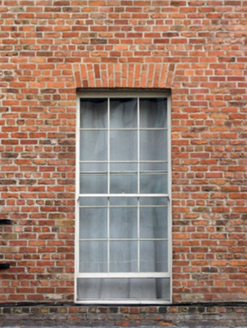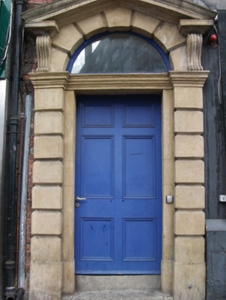Survey Data
Reg No
50010983
Rating
Regional
Categories of Special Interest
Architectural, Artistic
Original Use
House
In Use As
Hostel
Date
1760 - 1780
Coordinates
315928, 235086
Date Recorded
22/09/2011
Date Updated
--/--/--
Description
Terraced two-bay four-storey house, built c.1770. Now in use as hostel, with recent shopfront breaking slightly forward. Pitched slate roof behind rebuilt parapet wall with squared granite coping. Stepped yellow brick and rendered chimneystack with clay pots and cast-iron rainwater goods. English garden wall bond red brick walls. Gauged red brick flat-arched window openings with brick reveals and granite sills, with sills to first floor openings removed. Nineteenth-century replacement timber sliding sash windows, nine-over-nine pane to first floor, six-over-six pane to second floor and three-over-three pane to top floor. Round-headed door opening within tooled sandstone doorcase with replacement timber panelled door comprising channelled pilasters on plinth blocks with moulded necking continuing as lintel, surmounted by scrolled brackets with open-bed pediment housing replacement single-pane fanlight within rusticated surround.
Appraisal
This pleasantly proportioned house has maintained an early aspect, and is probably one of the earliest surviving buildings in the vicinity. Key historic features include a substantive and elegantly executed mid- to late eighteenth-century doorcase and historic timber sash windows. The English garden wall bond is an interesting departure from most other buildings on the street, although it is in keeping with its neighbour at No. 145. Originally named Ballybough Lane and later Great Britain Street, Parnell Street was laid out in the early eighteenth century as part of the prolific development of the Gardiner Estate.
